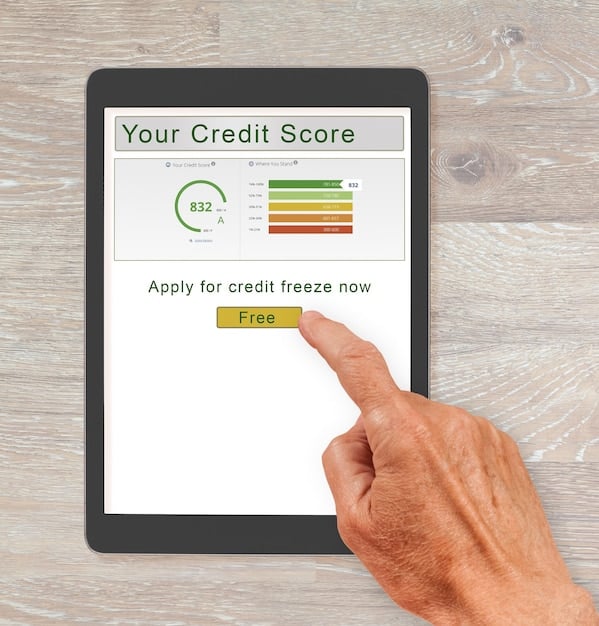Financial Spring Cleaning: Declutter Your Finances and Achieve Peace of Mind

Financial spring cleaning involves reviewing and decluttering your finances, much like cleaning your home, to identify areas for improvement and achieve greater peace of mind.
As the days get longer and the weather warms up, it’s a natural time to declutter and refresh your living space. But what about your finances? Financial spring cleaning: Declutter Your Finances and Achieve Peace of Mind is an often-overlooked but essential task to ensure your financial health is in top shape.
Why Is Financial Spring Cleaning Important?
Just like a physical spring cleaning, a financial spring cleaning helps you get rid of what you don’t need and organize what’s left. It’s an opportunity to take stock of your financial situation, identify areas that need improvement, and set new goals.
Regular financial check-ups can prevent small issues from becoming big problems, ensuring you stay on track towards your long-term financial objectives.

Benefits of Regular Financial Check-Ups
Taking the time to regularly clean up your finances offers several advantages:
- Gain Clarity: Understand where your money is going and identify wasteful spending habits.
- Reduce Stress: Get a handle on your debts, investments, and overall financial health.
- Improve Savings: Find opportunities to save more money and invest wisely.
- Achieve Goals: Stay focused on your financial goals, whether it’s buying a home, retiring early, or paying off debt.
Ultimately, financial spring cleaning isn’t just about decluttering; it’s about fostering a healthier, more mindful relationship with your money.
Step 1: Review Your Budget
The cornerstone of any financial spring cleaning lies in a thorough review of your budget. Understanding where your money comes from and where it goes is crucial for identifying areas for improvement.
Start by gathering all your financial statements, including bank statements, credit card bills, and investment reports.
Creating a Detailed Budget
To create a detailed budget, follow these steps:
- Track Your Income: List all sources of income, including salary, side hustles, and investments.
- Categorize Expenses: Divide your expenses into categories such as housing, transportation, food, entertainment, and debt repayment.
- Analyze Spending Habits: Identify areas where you can cut back or eliminate unnecessary expenses.
By carefully analyzing your spending habits, you can identify opportunities to save more money and allocate it towards your financial goals.
Step 2: Check Your Credit Report
Your credit report is a vital document that summarizes your credit history. It plays a significant role in determining your eligibility for loans, credit cards, and even rental applications.
Checking your credit report regularly can help you identify errors or signs of identity theft.

How to Obtain and Review Your Credit Report
You can obtain your credit report for free from the three major credit bureaus:
- Equifax: Visit their official website to request your report.
- Experian: Head to their site to access your credit information.
- TransUnion: Request your report through their online portal.
Carefully review your credit report for any inaccuracies, such as incorrect account balances, unauthorized accounts, or late payment notations. Dispute any errors with the credit bureau to ensure your credit report is accurate and up-to-date.
Step 3: Assess Your Debt
Debt can be a significant burden on your financial health, so it’s essential to assess your current debt situation and develop a strategy to manage it effectively.
Start by listing all your outstanding debts, including credit card balances, student loans, auto loans, and mortgages.
Strategies for Managing Debt
Consider these strategies for managing your debt:
- Prioritize High-Interest Debt: Focus on paying off debts with the highest interest rates first to minimize interest charges over time.
- Explore Debt Consolidation: Consolidate multiple debts into a single loan with a lower interest rate to simplify repayment.
- Create a Debt Repayment Plan: Develop a realistic repayment plan that aligns with your budget and financial goals.
Effectively managing your debt is a crucial step towards achieving financial freedom and peace of mind.
Step 4: Evaluate Your Investments
Your investment portfolio is a critical component of your long-term financial success. It’s essential to evaluate your investments regularly to ensure they align with your risk tolerance, time horizon, and financial goals.
Review your investment asset allocation to determine if it’s still appropriate for your current circumstances.
Diversifying Your Portfolio
To diversify your portfolio, consider the following:
- Stocks: Invest in a diversified portfolio of stocks to achieve long-term growth.
- Bonds: Include bonds in your portfolio to provide stability and income.
- Real Estate: Consider investing in real estate for diversification and potential appreciation.
Remember to review and rebalance your portfolio regularly to maintain your desired asset allocation.
Step 5: Review Insurance Coverage
Insurance provides essential protection against unforeseen events that could jeopardize your financial stability. It’s crucial to review your insurance coverage to ensure you have adequate protection in place.
Assess your health insurance, life insurance, homeowners or renters insurance, and auto insurance policies.
Different Types of Insurance
Understanding the different types of insurance and their importance:
- Health Insurance: Covers medical expenses and protects you from high healthcare costs.
- Life Insurance: Provides financial support to your beneficiaries in the event of your death.
- Homeowners/Renters Insurance: Protects your property and belongings from damage or theft.
Make sure your insurance coverage is sufficient to protect your assets and financial well-being.
Step 6: Set Financial Goals
Setting clear and achievable financial goals is essential for staying motivated and focused on your financial journey. Whether it’s saving for a down payment on a home, funding your retirement, or paying off debt, having specific goals in mind can help you make informed financial decisions.
Create a list of your short-term, medium-term, and long-term financial goals.
Defining Your Financial Goals
When setting your financial goals, consider these factors:
- Be Specific: Define your goals clearly and precisely.
- Make Them Measurable: Establish metrics to track your progress.
- Set Realistic Timelines: Determine realistic timeframes for achieving each goal.
Regularly review your goals and adjust your financial plan as needed to stay on track.
| Key Point | Brief Description |
|---|---|
| 💰 Review Your Budget | Analyze income and expenses to identify savings opportunities. |
| 📊 Check Credit Report | Ensure accuracy and dispute any errors to maintain a good credit score. |
| 💳 Assess Your Debt | Prioritize high-interest debts and explore consolidation options. |
| 🎯 Set Financial Goals | Define specific, measurable, and achievable goals to stay on track. |
Frequently Asked Questions (FAQ)
Financial spring cleaning involves reviewing and decluttering your finances to identify areas for improvement and ensure you are on track to achieve your financial goals. It’s like tidying up your financial life for a fresh start.
Ideally, you should perform a thorough financial spring cleaning once a year. However, a brief check-up every quarter can also be beneficial to stay on top of your finances and address any emerging issues promptly.
If you find errors in your credit report, dispute them with the credit bureau immediately. Provide supporting documentation to substantiate your claim and follow up to ensure the errors are corrected and your credit report is accurate.
Start by tracking your expenses for a month using a budgeting app, spreadsheet, or notebook. Categorize your spending and analyze where your money is going. This will give you a clear picture of your spending habits and help you create a realistic budget.
Some quick wins include canceling unused subscriptions, negotiating lower interest rates on credit cards, automating savings contributions, and consolidating debt. These small steps can make a big impact on your financial well-being.
Conclusion
Financial spring cleaning: Declutter Your Finances and Achieve Peace of Mind is a proactive approach to managing your finances and ensuring you are on track towards achieving your financial goals. By reviewing your budget, checking your credit report, assessing your debt, evaluating your investments, and setting financial goals, you can gain clarity, reduce stress, and improve your overall financial health.





